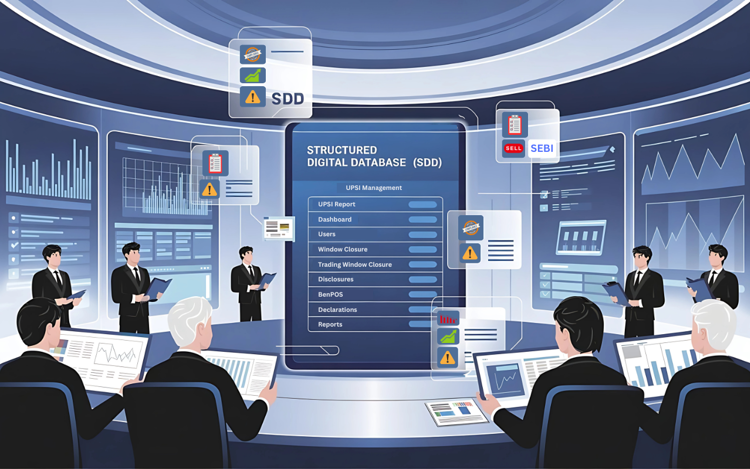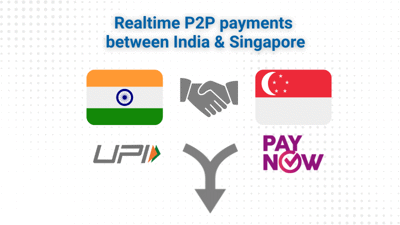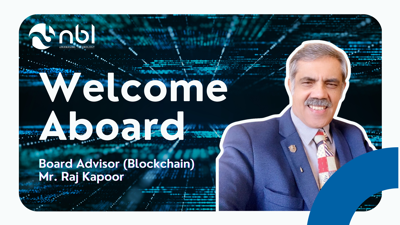Structured Digital Database (SDD) for UPSI Management & Insider Trading Compliance

If you're running a listed company in India, you've probably heard people throwing around terms like "SDD" and "UPSI" in boardroom meetings. Maybe you've nodded along, but deep down, you're wondering what exactly these mean and why they matter so much.
Here's the thing: getting this wrong isn't just about paperwork - it's about protecting your company from penalties that can reach crores and keeping key people out of prison. Yes, prison. The insider trading penalties in India imposes are that serious.
Let me walk you through everything you need to know about structured digital database systems and UPSI management, in simple terms so that anyone can understand.
What is Unpublished Price Sensitive Information (UPSI)?
Think of UPSI as any price sensitive information that could make your company's stock price jump up or crash down if it became public. UPSI goes way beyond just quarterly results - it includes any material information that investors don't know yet.
UPSI In Real Life With Example
You're about to land a massive contract that will double your revenue next year. That's UPSI. Your company is secretly exploring a merger with a competitor. That's UPSI. You've discovered a major quality issue that might lead to product recalls. That's definitely UPSI.
Unpublished price sensitive information covers anything that reasonable investors would want to know before buying or selling your company's shares. And here's where it gets tricky - the moment someone inside your company knows this information, they become an "insider" who can't trade in your company's stock until that information becomes public.
This means your company has a legal responsibility to control who knows what, when they know it, and what they do with that knowledge. Mess this up, and you're inviting serious legal trouble!
The Reality of Insider Trading Penalties in India
Let's talk numbers because they're sobering. Insider trading penalties can include:
- Fines up to Rs. 25 crores or 10 years in prison (whichever is higher).
- Disgorgement of all illegal profits.
- Being banned from capital markets entirely.
- Criminal prosecution for individuals involved.
Structured Digital Database for SEBI Compliance
Think structured digital database software as your company's insurance policy against insider trading violations.
Structured Digital Database requirements came about because SEBI realized that companies were terrible at tracking who knew what sensitive information and when they knew it. Traditional methods like emails, phone calls, and handwritten logs were full of holes.
SEBI mandates a sophisticated tracking system that records:
- Every piece of UPSI your company generates or receives.
- Every person who accesses that information.
- Exactly when they accessed it and for what purpose.
- What they did after receiving the information.
What SEBI Actually Requires
SEBI's latest amendments now require that any unpublished price sensitive information received from external sources must be entered into your SDD within two calendar days. This isn't a suggestion - it's a legal requirement.
SEBI’s SDD Requirements For Listed Companies Include:
Digital Record Keeping: Everything must be captured digitally, including people's names, PAN numbers, and timestamps for every interaction.
Non-Tampering Features: Your system must prevent anyone from going back and changing records after they're created.
Audit Trail Capabilities: When SEBI comes knocking, you need to be able to show them exactly what happened, when, and who was involved.
Real-Time Monitoring: The system should flag unusual patterns or potential violations before they become bigger problems.
How to Choose The Right SDD Software?
Choosing SDD software can feel overwhelming, but here's how to cut through the noise:
User-Friendly Interface: If your team can't figure out how to use it, even the best SDD software won't help you. Look for UPSI management software that is simple & easy to operate.
Comprehensive Tracking: The software should track everything SEBI requires and do it automatically. The less manual work required, the fewer chances for human error.
Integration Capabilities: The software should work with your existing systems. If it can't talk to your system, you'll end up with information silos.
Scalability: Whether you're a growing mid-cap or an established large-cap company, the software should grow with you.
Security Features: Given what you're storing, security isn't optional. Look for encryption, secure access controls, and regular security audits.
Finding the Best SDD Software Provider
SDD software providers vary dramatically in quality and expertise. Here's what separates the good from the mediocre:
Regulatory Knowledge: The best insider trading compliance management software comes from providers who live and breathe SEBI regulations. They should be updating their systems as regulations change, not scrambling to catch up.
Industry Experience: Has the SDD software provider worked with companies like yours? Do they understand your specific challenges and requirements?
Support Quality: Implementation is just the beginning. You need providers who offer comprehensive training, responsive support, and regular updates.
Customization Options: Every business is different. Your SDD software for UPSI should be flexible enough to match your company's unique workflows and requirements.
A single insider trading violation can cost your company crores in fines, legal fees, and reputational damage. Plus, your SDD software should automate many manual processes, freeing up your compliance team to focus on strategic work rather than administrative tasks. That’s where this compliance software pays for itself by preventing these incidents.
Implementing Your SDD System
Step 1 : Audit Your Current Practices - Before choosing any software, understand what you're currently doing (or not doing) to manage UPSI. Who has access to sensitive information? How is it currently tracked? Where are the gaps?
Step 2 : Define Your Requirements - Not all software are created equal. Create a detailed list of what you need based on your business size, complexity, and industry.
Step 3 : Evaluate Options - Research different software providers. Don't just look at features - consider ease of use, support quality, and regulatory expertise.
Step 4 : Plan Your Implementation - Rushing implementation is a recipe for failure. Plan for training, testing, and gradual rollout to ensure success.
Common Implementation Mistakes
Mistake 1 : Choosing Based on Price Alone - The cheapest SDD compliance software often becomes the most expensive when you factor in poor support, limited features, and compliance failures.
Mistake 2 : Skipping Training - Even the best software won't work if people don't know how to use it properly. Invest in comprehensive training programs.
Mistake 3 : Treating It as a One-Time Project - Staying Compliant is an ongoing process, not a set-it-and-forget-it solution. You need processes for monitoring, updating, and improving it over time.
Mistake 4 : Ignoring User Feedback - If your team finds the software difficult to use, they'll find ways around it. Listen to feedback and make adjustments as needed.
Protecting Your Company's Future
Implementing a robust SDD Software isn't just about meeting regulatory requirements, but it's about protecting your company's future. A Structured Digital Database ensures you can demonstrate compliance when SEBI comes calling, while also providing the operational benefits of better information management.
The companies that get this right don't just avoid penalties, but they also build competitive advantages through better risk management, improved operational efficiency, and enhanced stakeholder confidence.
If you're looking for a comprehensive solution, InsiderQ stands out as the best SDD software provider in the market. InsiderQ combines cutting-edge technology with deep regulatory expertise that not only meets current SEBI requirements but anticipates future regulatory changes.
Don't wait for a compliance crisis to force your hand. Start evaluating software options today. The regulatory environment will only get more stringent, and companies that act now will have significant advantages over those that wait.
Choose wisely, implement thoroughly, and maintain consistently. Your future self will thank you!





















